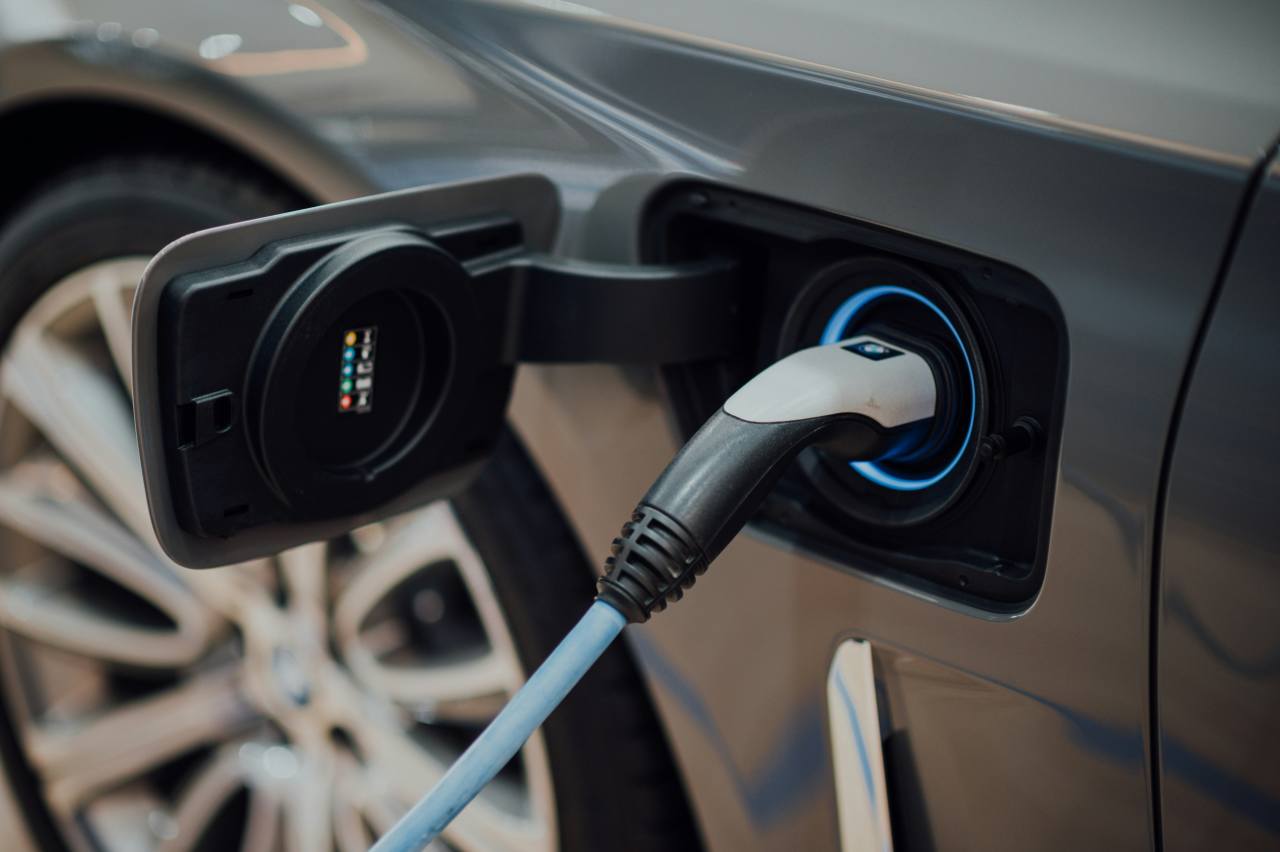Sometimes the future is a hard sell.
Among today’s reality of ‘inconvenient truths’, the fact that you’ll have to plug in and charge your car in the foreseeable future seems to be one which people hang on. “It’s inconvenient” or “it takes too long” are the leading complaints.
But, you can actually have the best of both worlds. Plug-ins, like our Ioniq PHEV here, blend the 'fuel efficiency' and low-emissions benefits of an electric drivetrain with the range and convenience of petrol.
If you’re like I once was, though, they’ll seem to be an awkward stop-gap solution between hybrid and full-electric.
Now I’ve had the chance to test all the Ioniq’s drivetrains back-to-back, I can tell you the PHEV version might actually be the best, most sensible hybrid option for Australian consumers. Read on to find out why.
Hyundai Ioniq 2019: Plug-In Hybrid Elite
| Engine Type | Inline 4, 1.6L |
|---|---|
| Fuel Type | Unleaded Petrol/Electric |
| Fuel Efficiency | 1.1L/100km (combined) |
| Seating | 5 |
| Price From | $23,100 - $28,490 |
| Safety Rating |
|
Does it represent good value for the price? What features does it come with?
The Plug-in Ioniq might wear its eco-credentials on its sleeve, but that doesn’t mean you miss out on any tech at all.
Our ‘Premium’ spec car gets an 8.0-inch multimedia touchscreen with Apple CarPlay and Android Auto as well as built-in nav backed by a eight speaker premium audio system, dual-zone climate control, leather interior trim, a powered glass sunroof, heated and air-ventilated front seats, full LED front lighting, keyless entry with push-start, rain-sensing wipers, a Qi wireless phone charging bay, and a slew of anti-fog features for the windows and mirrors.
.jpg)
Basically, it’s all you’ll need and would reasonably expect from a well-specified small or mid-size car. Oddly the Plug-in can only be equipped with 16-inch alloys, where the Premium-spec hybrid can have 17-inch wheels.
Is it expensive, though? In a word – yes.
The Ioniq plug-in comes in at $45,490 (MSRP) which is not only way more expensive than, say, a top-spec Elantra or i30, it’s more expensive than a fully-electric entry-level Ioniq ($44,990) and darned close to other fully electric options like the $49,990 Nissan Leaf.
.jpg)
This car’s spiritual direct rival, the Toyota Prius I-Tech (also expensive at $44,050), gets LED headlights and a head-up display, but doesn’t feel quite as up-to-date as a whole package.
Is there anything interesting about its design?
On the topic of the Prius, the Ioniq seems to mirror many of its iconic futuristic design points, while modernizing the formula. Up front, the Ioniq looks more sedate. It could be a hatchback version of the Korean brand’s Elantra sedan and you wouldn’t think twice.
Around the rear and in this car’s side profile, though, the Prius-esque look rears its head.
.jpg)
Annoyingly, this includes the spoiler-split tailgate, which has been at best controversial since the Prius first included it as part of its design language.
Other than that, the only other giveaways to this car’s eco credentials are the chunky eco-look 16-inch wheels and, if you look really closely, the dual fuel flaps.
It’s a much less challenging car to look at than the Prius, or perhaps even more futuristic alternatives like the just-landed Tesla Model 3.
.jpg)
Inside things seem to be a blend of the best of Hyundai’s current stable, including the slick and oh-so-ergonomic D-shaped (and leather bound) wheel, as well as practical switchgear and embedded 7.0-inch multimedia screen, similar to the one in the Elantra.
Hyundai’s software suite is easily one of the best on the market and syncs with Apple CarPlay seamlessly. The semi-digital dash cluster is simple while also delivering plenty of vital information to the driver. It also switches over to a completely different design in sport mode, which is a neat touch.
.jpg)
The seats have a nice design and hard-wearing trim. While there are still some well hidden average plastics (I would like some knee padding for the driver, for example) it’s a symmetrical and ergonomically designed cabin which should please most.
Some won’t be sold on the eco-look, and that’s okay. If you want plug-in hybrid tech, your choices are limited in this price bracket to something like the Mitsubishi Outlander PHEV, though.
How practical is the space inside?
The rest of Hyundai’s range put practicality first in the cabin, and the Ioniq is no exception. Up front you’ll find plenty of cabin storage, from big cupholders in the doors and centre console, to the deep console box and exactly phone-shaped trench under the climate controls.
Everything on the centre stack is just smart, too, with no wasted space and nothing over-designed. The stereo and climate controls are operated by a series of dials and toggles which jut out at a slight angle and are thus easy to reach for driver and passenger.
.jpg)
The front of the cabin offers plenty of space for arms and legs, while the rear seats offer decent, but not quite impressive legroom.
Rear passengers get decently-sized cupholders in the doors and rear air vents, but no power outlets. The rear seat trim is as contoured as the front seats and doesn’t come across as an afterthought.
.jpg)
The Ioniq’s hatch body makes for a sensible boot, but it is different for each drivetrain. Our plug-in grants a hatchback-sized 341 litres (VDA) with the seats up or 1401L with them down.
That’s plenty of room, but not as much as the hybrid version of the same car which grants over 100 litres more space.
Your space will be reduced slightly by the cable and case, but every Ioniq comes with a luggage net.
.jpg)
The only other thing worth noting about plug-in hybrid tech is the added annoyance of having to unspool the cable and plug-in at either side of your journey.
You’ll really need to do this to make the most of this car’s range and commuting efficiency, but I found it genuinely took five minutes of unplugging and spooling and fluffing around on either end of my work journey.
.jpg)
It’s no deal-breaker, and if you just toss the cable in the boot rather than spool it up each time you’ll save yourself that extra time, but it is just a bit annoying. Where’s the auto-retracting cable! (I think the future will be in induction charging anyway…)
What are the key stats for the engine and transmission?
Every Ioniq is different when it comes to what actually powers the front wheels. In the case of the plug-in this means a non-turbo version of Hyundai’s 'Kappa' 1.6-litre four-cylinder petrol engine producing 77kW/147Nm, combined with an electric motor capable of 44.5kW/170Nm. Combined outputs become 104kW/265Nm, which is not too bad for a hybrid.
.jpg)
The Plug-in gets an 8.9kWh battery. Hyundai says it’s capable of a maximum electric range of 63km. We’re not sure about this for reasons explained in the driving section of this review.
Drive goes to the front wheels by way of a six-speed dual clutch auto transmission.
How much fuel does it consume?
The plug-in hybrid is rated at... wait for it... 1.1L/100km. It takes a sip of fuel basically never.
How achievable that combined usage figure actually is will vary dramatically depending on how you drive and charge it.
For example – if you’re lazy and run the battery down to its reserves and drive it around as a glorified regular hybrid, expect somewhere between 4.5 and 6.0L/100km.
.jpg)
However, if you charge it at either end of your work commute, you can almost drive it on electric power alone for your entire week.
I did what is probably representative of most people. I charged it at work, commuted to-and-fro on my test week under mostly electric power only, then let it go down to its power reserves on the weekend, driving it as a hybrid mainly.
Against that 1.1L/100km I saw an overall figure of 3.4L/100km. It’s more than double, sure, but it’s also better than 90 per cent of hybrids right now. I also saw an effective range of almost 1100km.
.jpg)
Imagine only needing to fill up with 43 litres of 91 unleaded 10 – 20 times a year. Pretty neat? I thought so.
The Plug-in Hybrid’s battery takes roughly six hours to charge from a regular wall socket using the included cable. You can charge it in two hours using a charging station. The plug-in only accepts a Type 2 'Mennekes' charging port.
What's it like to drive?
The Ioniq isn’t fast, but it is a slick and comfortable unit for commuting.
Most of the experience from behind the driver’s seat mirrors the very good dynamics as you’ll experience behind the wheel of an i30 or Elantra.
This includes the almost identical steering, which is smooth and direct, and the localized suspension tune.
The ride quality is slightly on the sportier side, but the car doesn’t become unsettled easily. This is due to the more sophisticated multi-link rear suspension which is available on every Ioniq except for the electric.
One thing that immediately stands out is how quiet the plug-in is. It’s even quieter than the hybrid thanks to smaller wheels. Even when the engine is on, noise insulation is good. Sometimes it’s genuinely hard to pick when it’s come to life.
The plug-in uses its electric motor as the take-off drive in most scenarios (unless you activate sport mode by pushing the shift-lever across to the right).
This is efficient, though not exactly riveting. Acceleration is smooth but sluggish.
It takes a full second for the engine to take over when you pin the pedal to the firewall, which can count in scenarios where the extra shove is needed for an overtaking maneuver.
.jpg)
The Ioniq offers you either 'HEV' (hybrid electric vehicle) or a normal 'Hybrid' drive mode. The latter is only available once the battery is expended down to its reserve.
You have little control over when the car chooses to turn the engine on. Even when the battery is at full charge, the car will occasionally run the motor for unspecified amounts of time to power auxiliary systems, not necessarily drive systems.
It can be a little frustrating when you’re trying to maximise your time on the battery. The Prius, for example, offers much more transparent control over exactly how much accelerator is required for the engine to turn on (unless the battery is low).
While Hyundai has, no doubt, given the Ioniq’s computer full control for a reason, it makes it hard to achieve that 0.0L/100km fuel figure, even when you’re just commuting to and from work.
Warranty & Safety Rating
What safety equipment is fitted? What safety rating?
Every Ioniq, whether you buy the Hybrid, PHEV, or Electric, gets Hyundai’s full 'SmartSense' suite.
This includes today’s important active tech such as auto emergency braking (AEB) with forward collision warning (FCW), blind-spot monitoring (BSM), lane keep assist (LKAS) with lane departure warning (LDW), driver attention alert (DAA), active cruise control, park assist, and rear cross traffic alert.
The Premium grade gets front parking sensors added to the standard rear sensor and camera fit-out. You’ll only miss out on semi-autonomous ('Stop & Go') cruise control available on the fully electric version.
Mandatory safety inclusions are seven airbags, traction and stability controls, plus three top-tether and two ISOFIX child-seat mounting points.
The Ioniq PHEV is well equipped for safety, even at its price. Unsurprisingly, it carries a maximum five star ANCAP safety rating awarded in October, 2018.
What does it cost to own? What warranty is offered?
Hyundai was ahead of the curve when it introduced its five-year warranty program many years ago and stays ahead with transparent fixed pricing which extends out (truly) for the lifespan of the car.
The lithium-ion battery pack (better than the nickel-hydride one in the Prius) is covered by a separate eight-year warranty.
.jpg)
The Ioniq requires servicing once a year or every 15,000km, and fixed service pricing is the same as the hybrid version.
This means yearly service costs between $265 and $465 per visit for a yearly average of $305. Cheap, but not as cheap as the fully electric version which costs just $160 per visit.
Verdict
I hopped out of the Ioniq PHEV impressed with how much it makes sense for Australians. You can approach a 0.0L/100km fuel figure with daily charging and commuting, and when you need to commit to an intercity drive, you’ll have a range that exceeds 1000km.
Add on top of that the fact that it’s impressively equipped in terms of safety and multimedia technology and you have an excellent, if expensive, package.
It can plug that gap for Australians who want to move to EV but are put off by the limitations in range. Will Hyundai actually sell many? Who knows, it’s all in the future.







.jpg)

.jpg)
.jpg)
.jpg)





.jpg)



.jpg)
